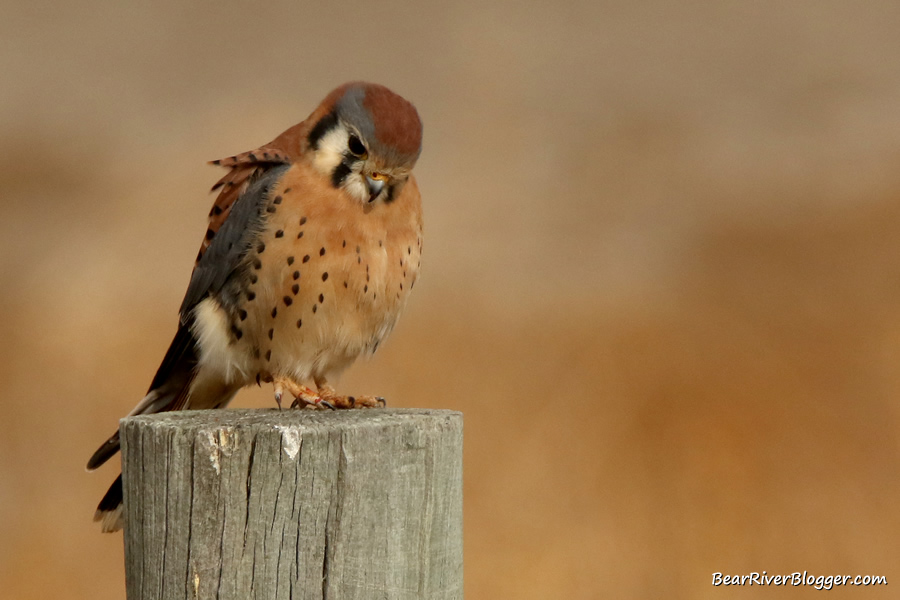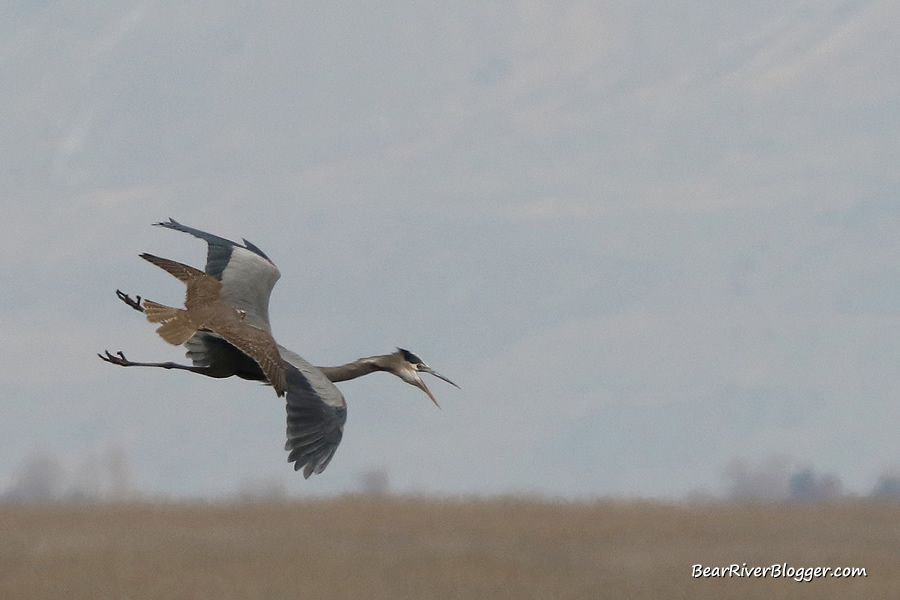Although it is uncommon, maybe even rare, some falcons will indeed attack the much larger great blue heron. Over the years, I have personally witnessed this occurrence several times on the Bear River Migratory Bird Refuge, with the latest episode being today, in fact.
Because of their size, adult great blue herons don’t have many common predators. Eagles, hawks, and some falcons are about the only predatory bird big enough to hunt this particular species of heron. Many of these avian predators, however, will pass up the seemingly easy target of the slow, lumbering blue heron in flight when there is other prey to hunt.
While visiting the Bear River Migratory Bird Refuge today, I was fortunate to have my camera with me when a prairie falcon started divebombing everything in sight. The resulting images are a bit soft due to the increasing clouds stealing my morning light but, even so, they do tell a pretty good story nevertheless.
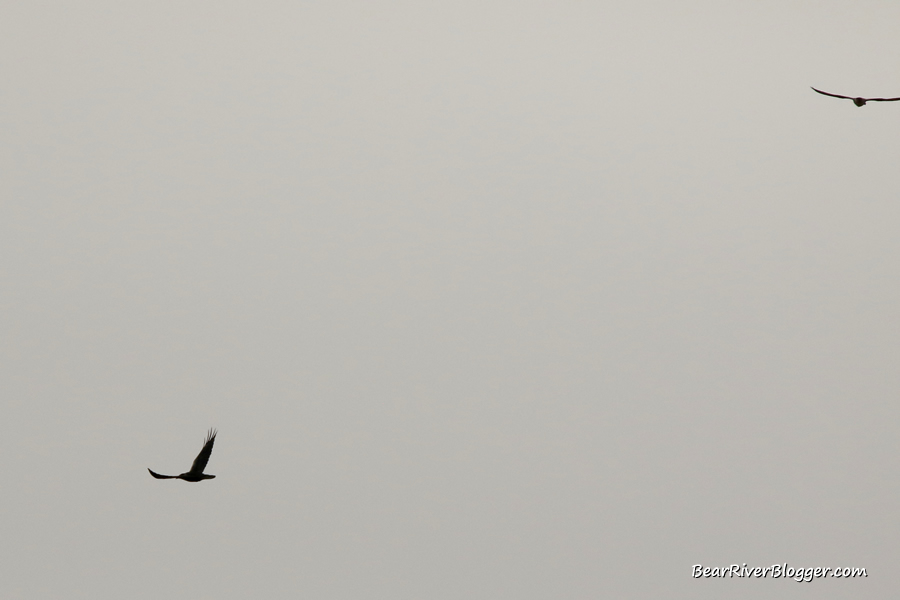
Ravens, harriers, and other airborne birds were certainly feeling the wrath of this hungry raptor but each attack was unsuccessful and short-lived at best. It seemed anything in the air was a possible target as this aerial assault went on for about 5 minutes.
As I drove closer to where the falcon was hunting, a great blue heron perched alongside the canal caught my eye. The recently scorched earth gave the large steel-grayed bird a most unusual backdrop so I had to stop and take a quick picture.
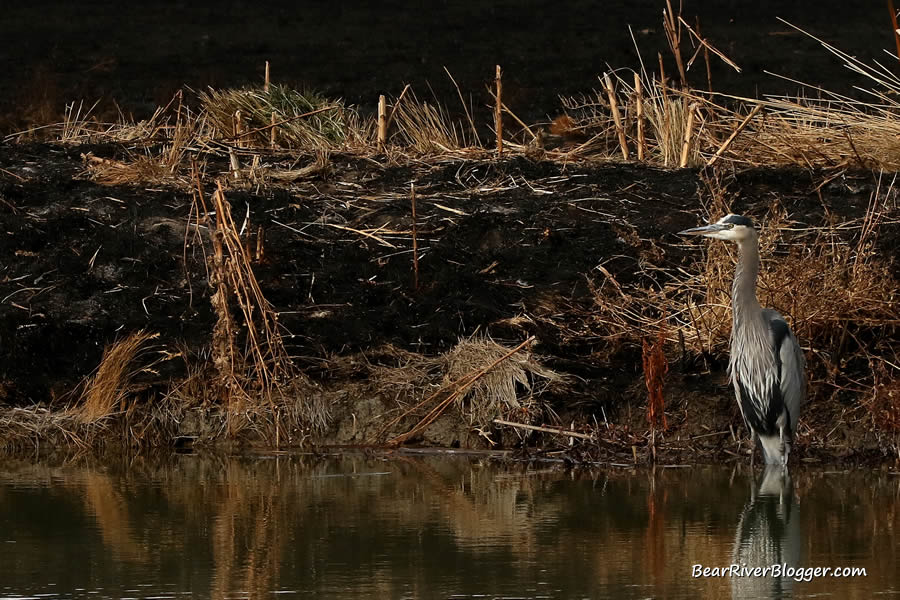
I took a few images of the heron before it took off and flew towards another spot down the canal but it wasn’t long before the falcon took notice of the large heron in flight. The following images help convey the nearly 20-second chase before the falcon gave up the pursuit and headed off in a different direction, never to be seen again on the remainder of my drive around the refuge auto tour route.

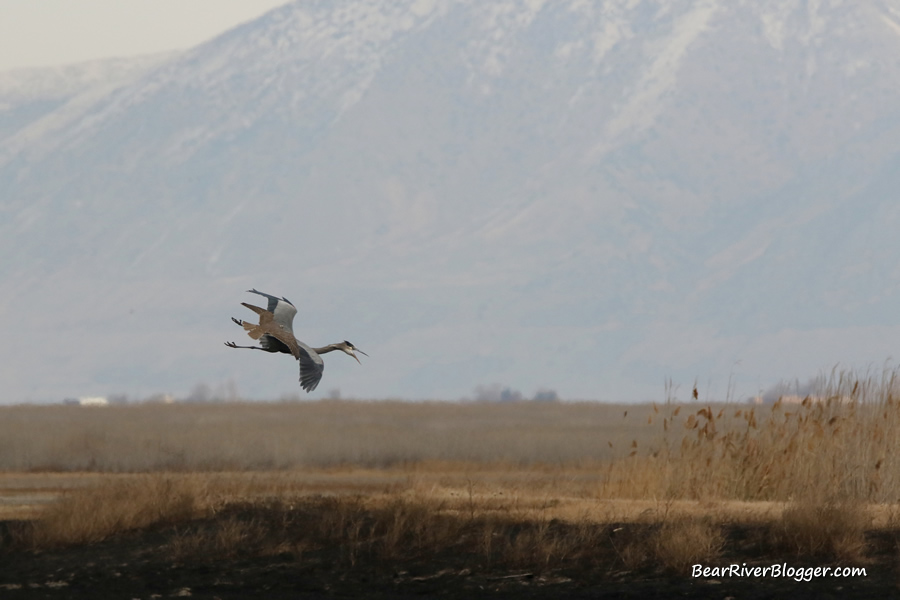
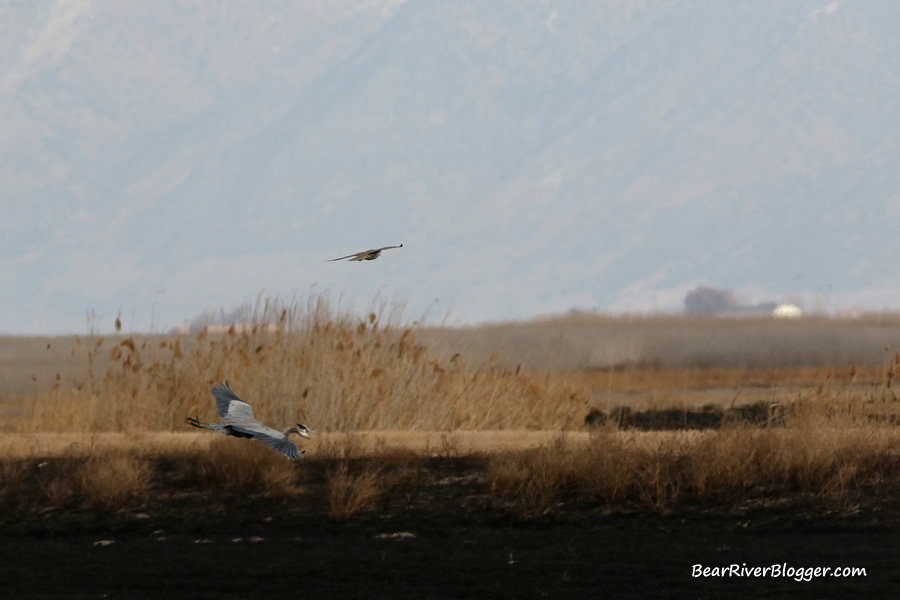
Luckily, for the great blue heron, at least, the chase was short-lived. Other heron-falcon encounters I have witnessed resulted in numerous attacks on the great blue herons before the raptor would give up but all of them have ended the same way, with the falcon finally giving up on the much larger prey and moving on.
It makes me wonder why they make the effort in the first place. The heron appears much too big to be easily handled by the prairie falcon. I know falcons can take down prey larger than they are, but with so much waterfowl on the refuge, it puzzles me why such a hunt even crosses the falcon’s mind with much easier prey nearby.

I will have to say, I’m glad the great blue heron survived the attack as they are one of my favorite birds to watch and photograph. I am also a huge fan of falcons so rooting for either one over the other seems a bit odd to me, but in this case, I am glad it turned out the way it did.
I’m certain with all the waterfowl and shorebirds that visit the refuge, this prairie falcon can easily find a meal. That, in itself, is why it was so odd yet interesting to see it go after a much larger bird when there were so many ducks nearby.
What Kinds Of Falcons Are On The Bear River Migratory Bird Refuge In Utah?
Utah has 4 different types of wild falcons, including the American kestrel, merlin, peregrine, and prairie falcon. I have seen all four species of falcons on the Bear River Refuge, but the most common is the kestrel. Prairie falcons are the second most common, at least in my own observations, that is.
The peregrine is a year-round resident in Utah, but strangely enough, it’s a bird I rarely see on the refuge. A couple of months ago, as I was just leaving the auto tour route, I spotted a juvenile peregrine sitting high atop a power pole. It gave me just enough time for this photo before it flew off.
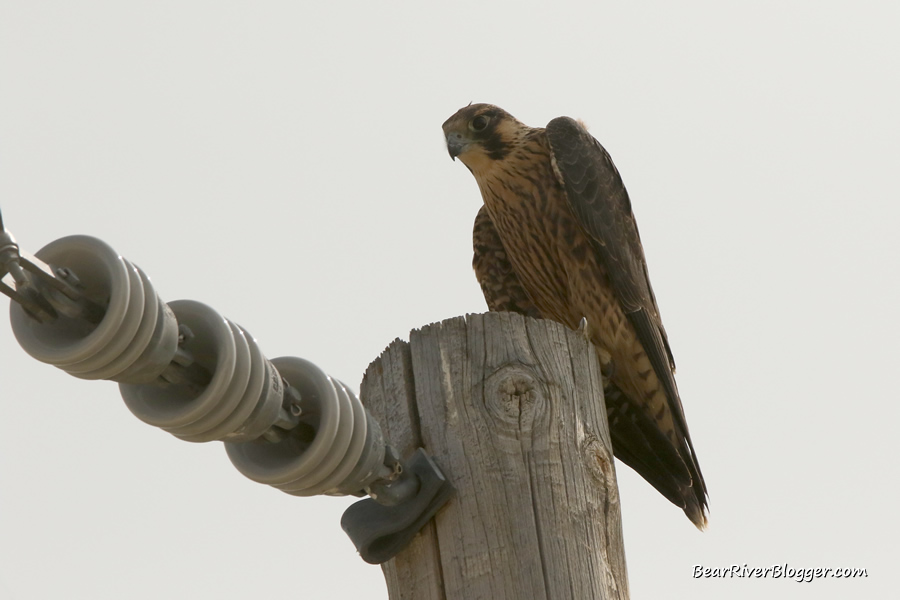
The merlin, a winter-only resident here in Utah, is the species of falcon I see the least on the refuge, but odd as it may seem, in the neighboring farming areas, I see them almost daily during the winter months. Even though I wasn’t able to get any pictures, I did see 2 merlin falcons perched on a pole just a couple miles from the refuge this morning.
In fact, that makes 3 out of 4 falcon sightings for me today as I saw numerous American kestrels on my way down to the refuge auto tour route, with one giving me a rare moment for a photograph or two.
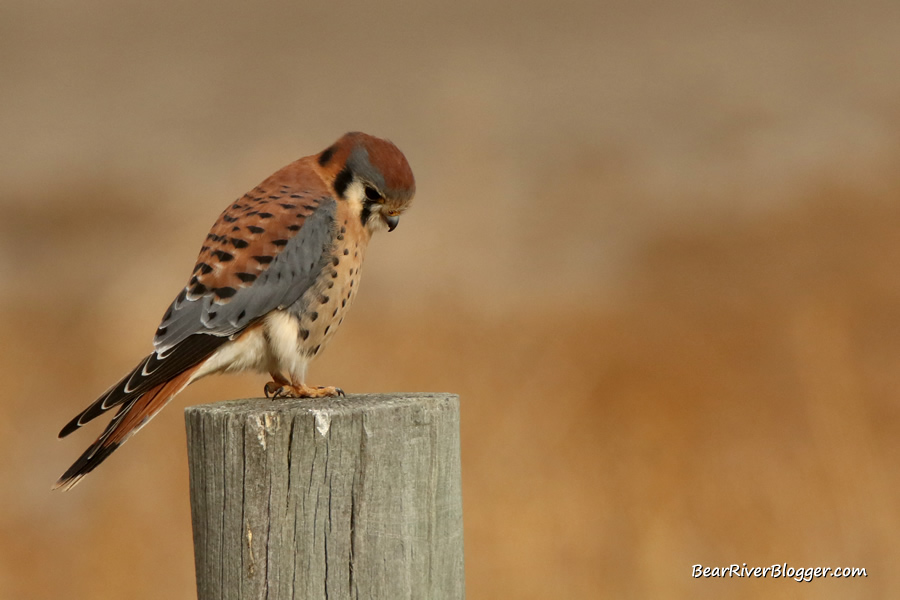
Conclusion
Each time I visit the Bear River Migratory Bird Refuge, I never know what to expect and today was indeed one of those days. I was so fortunate to see not only a fascinating predator, the prairie falcon, but one taking on a most unusual hunt for a much larger great blue heron.
I guess, if truth be told, that is why I like bird watching so much. It’s also why I enjoy each and every moment I have on the refuge. Each trip is always different and I never know what I will see until I take a drive around the auto tour route.
Follow our blog
If you are a birder, don’t forget to head over to my subscription page and sign up to follow my blog via email notifications. Each time I do a blog post or have something interesting on our website we send out email notifications.
I appreciate your readership and thank you for your support.
